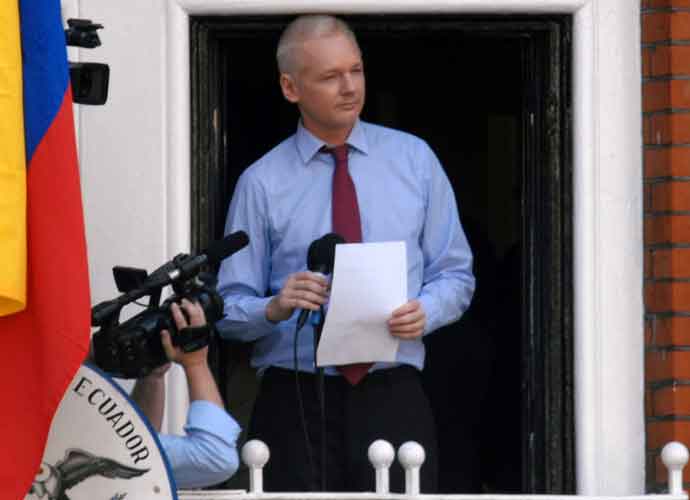Julian Assange Used Time In Ecuadorian Embassy To Meet With Russian Agents Abbout 2016 Interference
New documents obtained by CNN detail how WikiLeaks founder Julian Assange used his position in the Ecuadorian embassy in America to receive deliveries of hacked material and helped send that material to WikiLeaks to be released during the 2016 election in order to hurt Hillary Clinton’s campaign. The documents also show Assange having extensive connections to the Kremlin.
SLIDESHOW: TOP DEMOCRATS RUNNING FOR PRESIDENT IN 2020
CNN received hundreds of surveillance reports from UC Global, a private Spanish surveillance company employed by the Ecuadorian government to look into Assange’s stay at their embassy. The reports detailed how Assange, who was seeking political asylum after leaking sensitive U.S. military documents in 2010, met with Russian agents and hackers in order to help send compromising information to WikiLeaks.
According to UC Global, Assange quickly used his influence in the embassy to acquire high-speed internet access. Then, five days after the Democratic National Committee announced it was hacked in June 2016, Assange beefed up his computer system “for data transmission.”
Subscribe to our free weekly newsletter!
A week of political news in your in-box.
We find the news you need to know, so you don't have to.
On July 14, the reports mention how the WikiLeaks founder spent hours in a secret meeting with German hackers Andrew Müller-Maguhn and Bernd Fix. This is the same day that Russian hackers send information to WikiLeaks entitled “big archive.”
Then, on July 18, security camera footage shows an embassy guard abandoning his post to receive a package from a man disguised in a mask and sunglasses, who is believed to have been a courier for hacked materials. That same day WikiLeaks tells Russian hackers that they have received confidential files from them.
Throughout this entire timeline, WikiLeaks was in constant, secret communication with Russian hackers, according to excerpts from Robert Mueller’s report on election interference. He wrote that the Russian operatives obscured their identities using fake personas in order to later take credit for the hacks and divert the blame from Russia. The UC Global report strengthens Mueller’s claim, as it reports frequent meetings between Assange and Kremlin agents. In June the WikiLeaks founder had five meetings with senior officials at RT, the Russian propaganda entity, in the United States which Mueller linked to the election interference. Assange also met with Yana Maximova, a Russian national who visited the embassy at key moments in June 2016.
Later in October 2016, two WikiLeaks operatives show up at the Ecuadorian embassy carrying computer equipment and over 100 flash drives. The embassy staff was unable to search them due to the privileges granted to Assange.
The information provided by UC Global corroborates much of the information in the Mueller Report, which stated that WikiLeaks received most of its information from the Russian government. The connection between Assange and various foreign agents detailed in the surveillance reports indicates that he was the pickup point for much of the material received, and the timelines laid out in both sets of reports match up, further strengthening the claims of both Mueller and UC Global.
In April of this year, the Ecuadorian president revoked the WikiLeaks founder’s asylum protections, asserting that he had “violated the norm of not intervening in internal affairs of other states,” allowing him to be seized by British authorities. Assange is currently serving a one-year jail sentence in the United Kingdom over failure to pay bail and is viciously fighting against being extradited to the United States, where he is wanted for leaking confidential government documents. If he is returned to the U.S. he will likely spend the rest of his life in jail.
Get the most-revealing celebrity conversations with the uInterview podcast!







Leave a comment